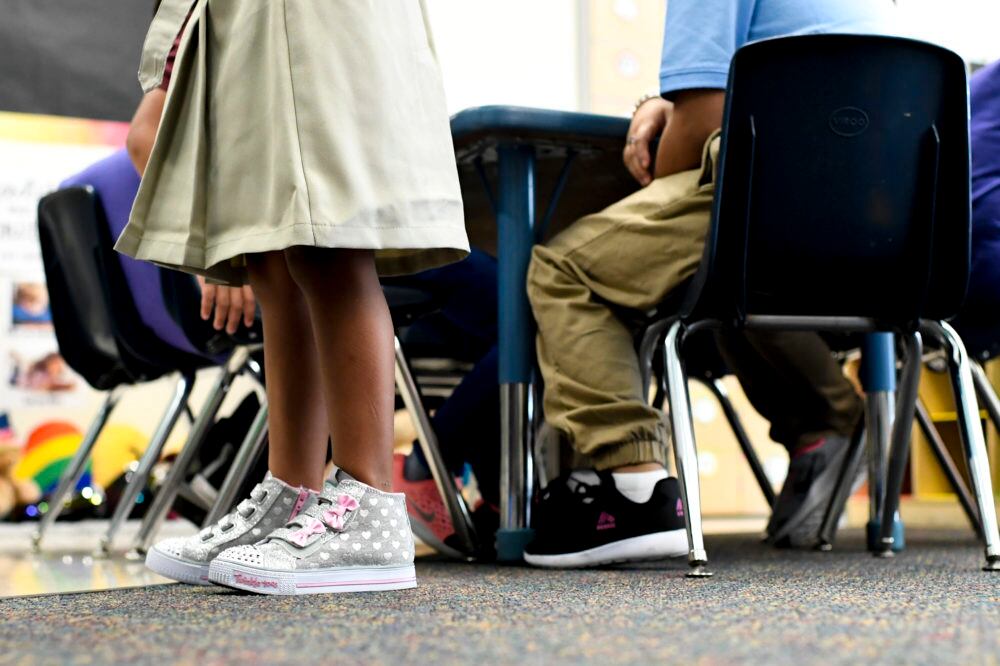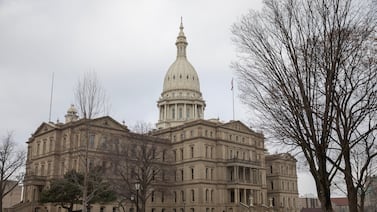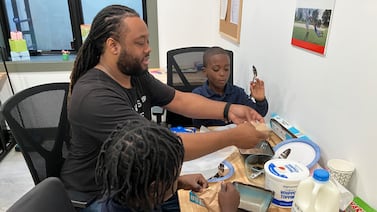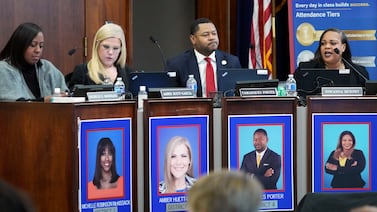Sign up for Chalkbeat Colorado’s free daily newsletter to get the latest reporting from us, plus curated news from other Colorado outlets, delivered to your inbox.
Hispanic students in Denver are more likely to attend schools with lower enrollment — and therefore more likely to be affected by any school closures — than white or Black students.
Students who qualify for subsidized school meals, an indicator of poverty, are also more likely to attend lower-enrolled Denver schools than students from wealthier families.
Those are among the findings in a new Denver Public Schools report released by the district as the school board debates a policy on how to close or consolidate schools amid declining enrollment. The board is set to discuss both the report and the policy Monday.
The report says that “action steps” taken by the district to address low enrollment, which the report analyzes in the context of low building utilization — that is, schools with more capacity than students — “should be conducted through an equity lens given the significant disproportionality in student demographics of attending schools.”
Enrollment in DPS has been decreasing since 2019, and despite a temporary boost this year due to an influx of students from South America, the district predicts the enrollment declines will continue and it will need to close more schools.
School closures are politically unpopular and disruptive to families. But whether they are good or bad for students depends on your perspective.
Denver school board members have said closures are necessary because small schools have fewer per-pupil dollars and resources, and combining schools ensures students have access to things like art and music classes and robust mental health staff.
National research is mixed on whether students from closed schools do better academically at new schools. But it’s clear that communities often feel pain when their schools close.
The findings that Hispanic students and those from low-income families are most likely to attend schools at risk for closure are especially striking given that those two groups, though still the majorities in DPS, are shrinking. DPS is becoming whiter and wealthier overall, the report shows.
Ten years ago, 71% of DPS students qualified for subsidized school meals. This year, 63% did. White students made up 22% of DPS’ population a decade ago, compared to 25% now.
Here are some more numbers from the report, an annual endeavor known as the Strategic Regional Analysis that looks at enrollment in DPS as a whole and as split into six regions. The report shows three of the six regions — southwest, northwest, and central Denver — have lower than average building utilization rates, meaning they have the most empty seats.
88,258: The number of preschool through 12th grade students enrolled in DPS in October 2023
6,338: The number of students DPS predicts it will lose by 2028
74%: The percentage of students in schools where the building utilization rate is lower than the district median — in other words, lower-enrolled schools — who qualify for subsidized meals
63%: The percentage of students in lower-enrolled schools who are Hispanic
17%: The percentage of students in lower-enrolled schools who are white
13%: The percentage of students in lower-enrolled schools who are Black
District leaders have repeatedly acknowledged that school closures disproportionately impact low-income communities of color, and several school board members have personally experienced closures themselves as parents or educators.
But schools that serve these populations continue to be closed in Denver and around the country. Last year, the Denver board voted to close three small schools: Fairview Elementary, where 93% of students were students of color and 84% qualified for subsidized meals; Math and Science Leadership Academy, where 97% of students were students of color and 94% qualified for subsidized meals; and Denver Discovery School, where 94% of students were students of color and 88% qualified for subsidized meals.
Melanie Asmar is the bureau chief for Chalkbeat Colorado. Contact Melanie at masmar@chalkbeat.org.







